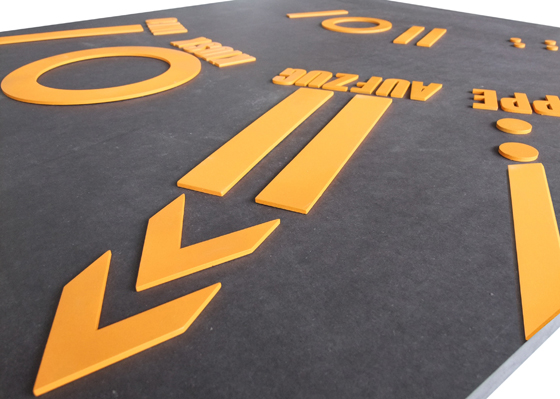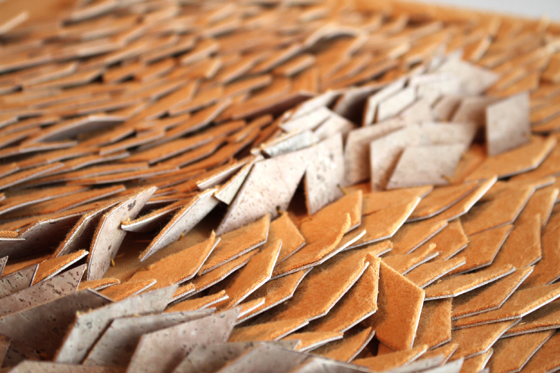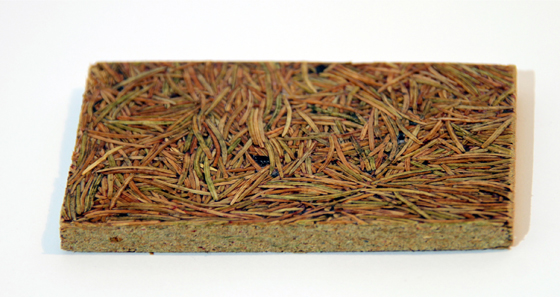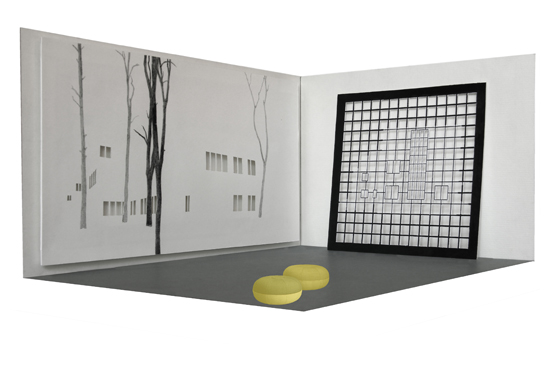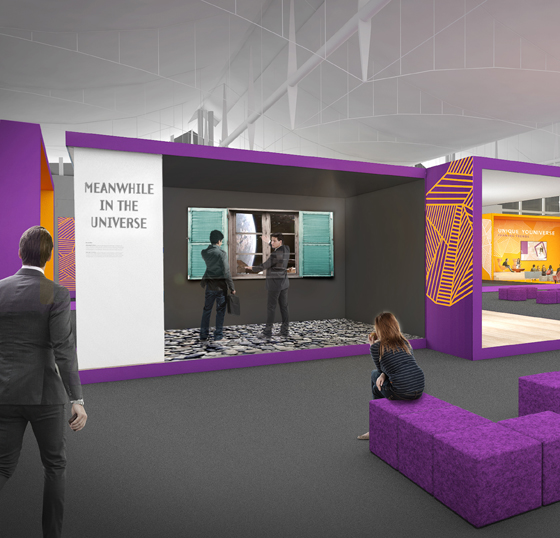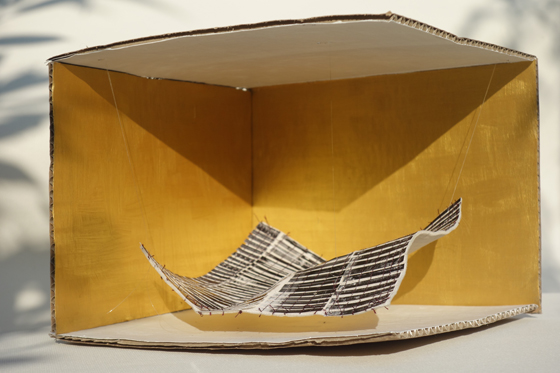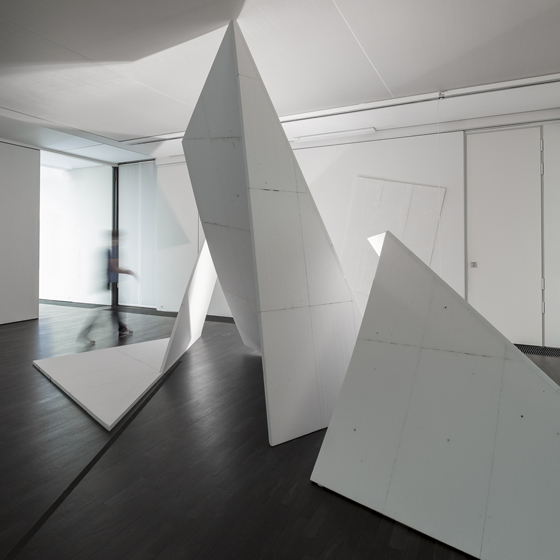Coming Soon: Framing Trends
Scritto da Domotex
Hannover, Germania
09.11.17
Artists, as well as design and architecture students, are developing creative flooring projects around the Unique Youniverse theme, providing a glimpse into their work in progress.
From 2018 onwards, Domotex, the world’s leading trade fair for floor coverings (12-15 January 2018), will be focusing on an annual keynote theme. Exhibitors and other players in the field can present themselves with creative installations. For this purpose, an inspiring environment entitled Framing Trends will be set up in Hall 9.
At Domotex 2018, the growing desire to be able to customise products and services will be mirrored in the Unique Youniverse theme. Designed by students and artists, NuThinkers and Art & Interaction are two of a total of four different zones presented in the special Framing Trends display. Using innovative installations, the Unique Youniverse core theme can be experienced in a sensory way.
NuThinkers present innovative design ideas
Students from the universities of Hanover and Mainz, as well as from Hochschule der Bildenden Künste Saar (HBKsaar) have been doing a lot of research, experimentation and work in order to sniff out new trends in customised flooring and to come up with some fresh ideas. For three of the twenty projects in total, Domotex is providing a peek into the NuThinkers’ work in progress:
“Blindsight” by Nina Düwel, University of Hanover
Can floors communicate with users and help them find their way through a building? Exploring this question, student Nina Düwel has developed a new navigation system for blind people. The groove or blister panels used in traditional tactile paving systems often mark only continuous guidance paths where, with today’s cane tips, it is difficult to differentiate between the tactile and the neighbouring paving. Using intuitive and universal symbols on the floor, for example for toilets, elevators and information points, visually impaired people are given the freedom to move independently through their Unique Youniverse.
“Fairkorkt” by Sarah Gerner and Johanna Kolb, University of Hanover
Fairkorkt is a vegan, organic carpet made from tiny cork discs or lozenges. In the example used by the two students, light-orange felt has been glued to one side of the lozenges, providing a pleasant tactile experience. The many cork lozenges are sewn to a base layer using just one stitch so that the lozenges appear to be loose. When stepping on the carpet, the lozenges move, creating different colours and textures. By interacting with the carpet, each user creates
a new look, thus generating their own footprint.
“Fuß-Arbeit” by Raphael Sommer, HBK Saar
Take some leaves and some pine or spruce needles and boil until the resins and fibres unfold. Then glue the mass together using heat and pressure and voilà: you have an ecological and recyclable floor covering. The idea behind Raphael’s design was to create a floor covering using materials that are ‘at our feet’ anyway and available in abundance. That’s how he arrived at ‘nature’s waste’ and, after some experimenting, created no fewer than five different natural floor coverings: Fichtennadeln (Spruce Needles) and Kiefer- und Fichtennadeln gemischt (Mixture of Spruce and Pine Needles), whose autumnal shades and dynamic patterns create an aesthetic effect; Altes Laub (Old Leaves); Japanischer Knöterich mit Wachs (Japanese Knotweed with Wax), whose filigree leaf structure makes for a very luxurious look, and finally, Nadelwerk (Needlework). Like chipboard, the latter can be produced in different formats and sanded and sealed using various lacquers or resins. A floor covering that is as creative as nature and as unique as its users.
With exhibits from the worlds of art and design, Art & Interaction creates a sensory experience of Unique Youniverse. The participating artists explain their approaches:
“Bauhaus” by Thomas J. Biswanger, Creative Director, and Hansjörg Schneider, Artist
“Bauhaus revisited! Our exhibition only suggests the image of the Masters’ Houses located in a pine forest in Dessau. The cut-out window openings break up the drawing, showing the wall behind it. A filigree mesh leans against the neighbouring wall. If you
squint, you will not only see the arrangement of the windows, but also the light-shaded building. The exterior becomes the interior. This is not an act of domestication. The material maintains its resistance. The space unfolds freely... Each idea is looking for a suitable material. This is not an easy process. A material is more than the sum of its qualities: it can bring together opposites in surprising ways. Here, the hardness of a wall meets the flexibility of paper and the softness of textiles.”
“Meanwhile” in the Universe by Michael Acapulco, Artist
“I’m presenting a space-creating installation entitled Meanwhile in the Universe. In the centre, there is an old window with shutters, providing the frame for a video screening. The video shows live footage from the universe. The installation creates a feeling of standing in front of a building. Thus, the viewer’s own position is put into perspective, as the boundaries between inside and outside are dissolving. The visitor experiences a place of changing perspectives: escaping or taking a stance.
“flugs” by Jette Hampe, Artist
“An object fixed to the ceiling, hovering in space. The bottom side of the suspended structure is made of silk. On the upper side, there are countless black and white photos, cut up and sewn together again. The photos show forest clearings, shadows of trees in the evening light, interspersed with faces of people from different nations. The material has an exotic expression. The installation evokes a fairy-tale feel: self-determined, undisturbed happiness. But, at the same time, there are questions regarding the effort of creation: at which price? The installation plays with the idea of a lost idyll, yet one without a firm floor.”
“Raumskizzen” by Florian Lechner, Sculptor
“A three-dimensional, accessible drawing opens up to the visitor: geometric elements with light-to-dark gradients create both an analogue and a virtual space. Volumes created by light and abstract shadows are superimposed on digital renderings, break at the edges of the room, tear off in the darkness and consolidate into both a baroque and minimalist state. Visitors will experience an installation where the boundaries between real and fictitious space interweave.

